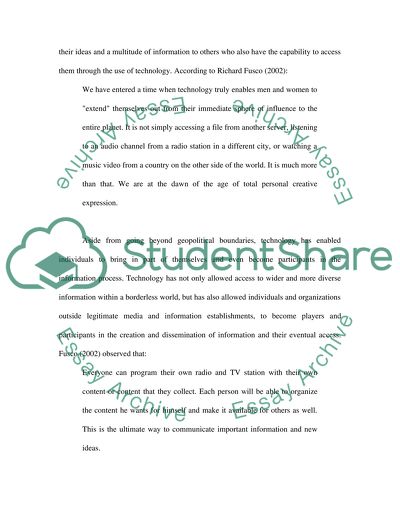Cite this document
(“News Media Essay Example | Topics and Well Written Essays - 3000 words”, n.d.)
Retrieved from https://studentshare.org/technology/1507975-news-media
Retrieved from https://studentshare.org/technology/1507975-news-media
(News Media Essay Example | Topics and Well Written Essays - 3000 Words)
https://studentshare.org/technology/1507975-news-media.
https://studentshare.org/technology/1507975-news-media.
“News Media Essay Example | Topics and Well Written Essays - 3000 Words”, n.d. https://studentshare.org/technology/1507975-news-media.


